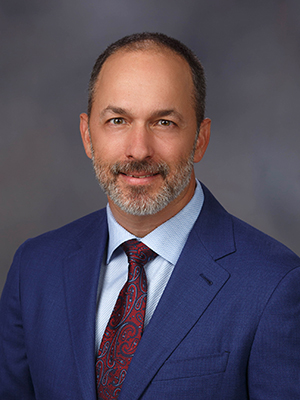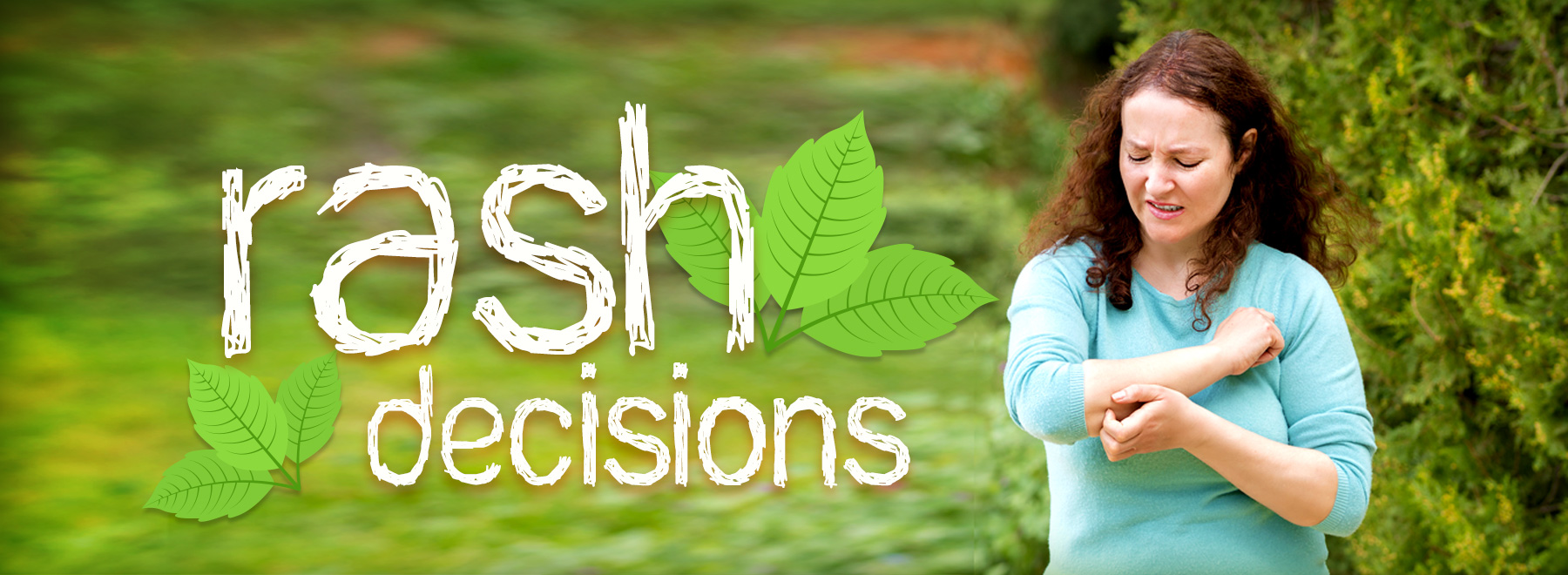Follow these tips to treat, avoid poison ivy itch
It’s a rash that, for some people, itches so badly that it can wake you from a sound sleep.
The culprit is poison ivy, poison oak or poison sumac – and more specifically, the oil called urushiol found in those plants that causes an itchy, often blistering rash when it comes in contact with the skin anywhere on your body.

If you’re sure you have a rash from exposure to poison ivy, oak or sumac, you can usually treat it at home so long as it’s mild and on a small section of skin. Any worse than mild, however, and you should consult your dermatologist or a health care provider, said Dr. Adam Byrd, University of Mississippi Medical Center associate professor of dermatology who practices at UMMC’s dermatology clinic in Louisville, Miss.
“People will be people, and they will get poison ivy,” Byrd said. “They just need to know what to look for, and when to see the doctor. Over-the-counter medications won’t help that much.”
Mississippians are likely to come across poison ivy and oak while gardening or spending time outdoors. “They look very similar, with three leaves,” Byrd said. “But, the urushiol is more concentrated on the stems than the leaves. You will get it more potently if you handle or touch the vines.”
That’s especially tricky during the fall and winter months, he said. “They will lose their leaves, and you won’t know the vines are poison ivy,” he said. “It can grow as a ground cover, or it can be a vine 20 feet in the air. The toxin is very potent.”
Byrd and experts at the American Academy of Dermatology recommend taking immediate steps to treat the rash and stop the itch:
- Thoroughly wash the skin to remove all traces of the urushiol. If it’s not washed off, the oil can be spread from person to person or to other areas of your body.
“If you know for a fact you got into it, make a huge mess with liquid dish soap and a water hose. Scrub hard and make the foam go everywhere,” Byrd said. “You’ll either won’t get it, or you will barely get it if you do this within about 20 minutes of exposure. It takes a pretty potent soap to get the oil off your skin.
“If you’ve been working in the garden, take a break once an hour and wash your hands with a good liquid dish detergent,” Byrd said. “A lot of people stay out of trouble if they do that.”
In addition to using a liquid dish detergent, you can search for over-the-counter products such as Zanfel to remove oils from the skin, Byrd said.
Wash the clothes you were wearing when you came in contact with the poisonous plant. Wash everything else that might have the oil on its surface – gardening tools, golf clubs, bed linens and even your pet’s fur. Wear gloves while touching or washing anything that could possibly have oil on it, and then wash the gloves or dispose of them.
- Look for signs of a reaction. After someone is exposed, Byrd said, they’ll experience itching a day or two later. “First, your skin will be red, and then you may have a cluster of bumps. The key here is to identify the history behind it. Were you working in the garden? Were you in the woods?
“Poison ivy and poison oak will almost always run in linear lines to show where you rubbed on the leaves. Look for a haphazard, asymmetric eruption of blisters using a linear pattern. They can become fluid-filled blisters the size of a marble.”
- Find the treatment that’s right for your situation.
“Once you break out in poison ivy, over-the-counter cortisones don’t have the horsepower to take care of it, or to get rid of the itch,” Byrd said. “If it starts getting all over your body and you are suffering, go to your doctor, and you might need to ask for a steroid shot.”
For moderate to severe cases, Byrd recommends injectable steroids instead of a low-dose, multi-day regimen. “Providers should be very aggressive in treating poison ivy,” he said. “Even experienced doctors can be confounded by how resistant to treatment it can be, and that it can flare back up.”
Try not to scratch the affected area. The skin can become infected. If blisters open, don’t remove the skin, but instead let it serve as protection for the raw wound underneath.
Contrary to what some might believe, the liquid inside a poison ivy blister is not infectious. Assuming you’ve removed all traces of the urushiol through bathing or showering, you shouldn’t worry about spreading it, Byrd said. It’s also a good idea to use a brush to clean underneath your fingernails to remove traces of urushiol, he said.
Experts at the American Academy of Dermatology say you should get immediate medical attention from a board-certified dermatologist or a trip to the emergency room if, after exposure to poison ivy, oak or sumac, you have difficulty breathing or swallowing; have a rash around the eyes, mouth or genitals; swelling on the face, especially if an eye swells shut; itching that worsens or makes it impossible to sleep; a rash on most of your body; or a fever. Those are signs of a potentially severe reaction.
Between 50-75 percent of people are allergic to poison ivy, oak or sumac, and “some people won’t ever get it,” Byrd said.
The best way to treat poison ivy, Byrd and other experts say, is to prevent it in the first place.
Byrd said he routinely kills poison ivy in his yard by spraying it with a weed control or herbicide product. Other tips:
- Wear gloves, long sleeves and long pants, socks and boots while gardening or spending time in a wooded area, and machine-wash the clothing and gloves after you’re done.
- Apply an over-the-counter ivy blocker to hands, arms and legs to give an extra layer of protection in addition to wearing long pants, gloves and other clothing.
- Clean all tools and other equipment by wiping them down after use with alcohol or washing with soap and lots of water. Oil can remain on their surfaces for months or even years until it’s washed off.
Learn more or schedule an appointment with a UMMC dermatology provider.
The above article appears in CONSULT, UMMC’s monthly e-newsletter sharing news about cutting-edge clinical and health science education advances and innovative biomedical research at the Medical Center and giving you tips and suggestions on how you and the people you love can live a healthier life. Click here and enter your email address to receive CONSULT free of charge. You may cancel at any time.



